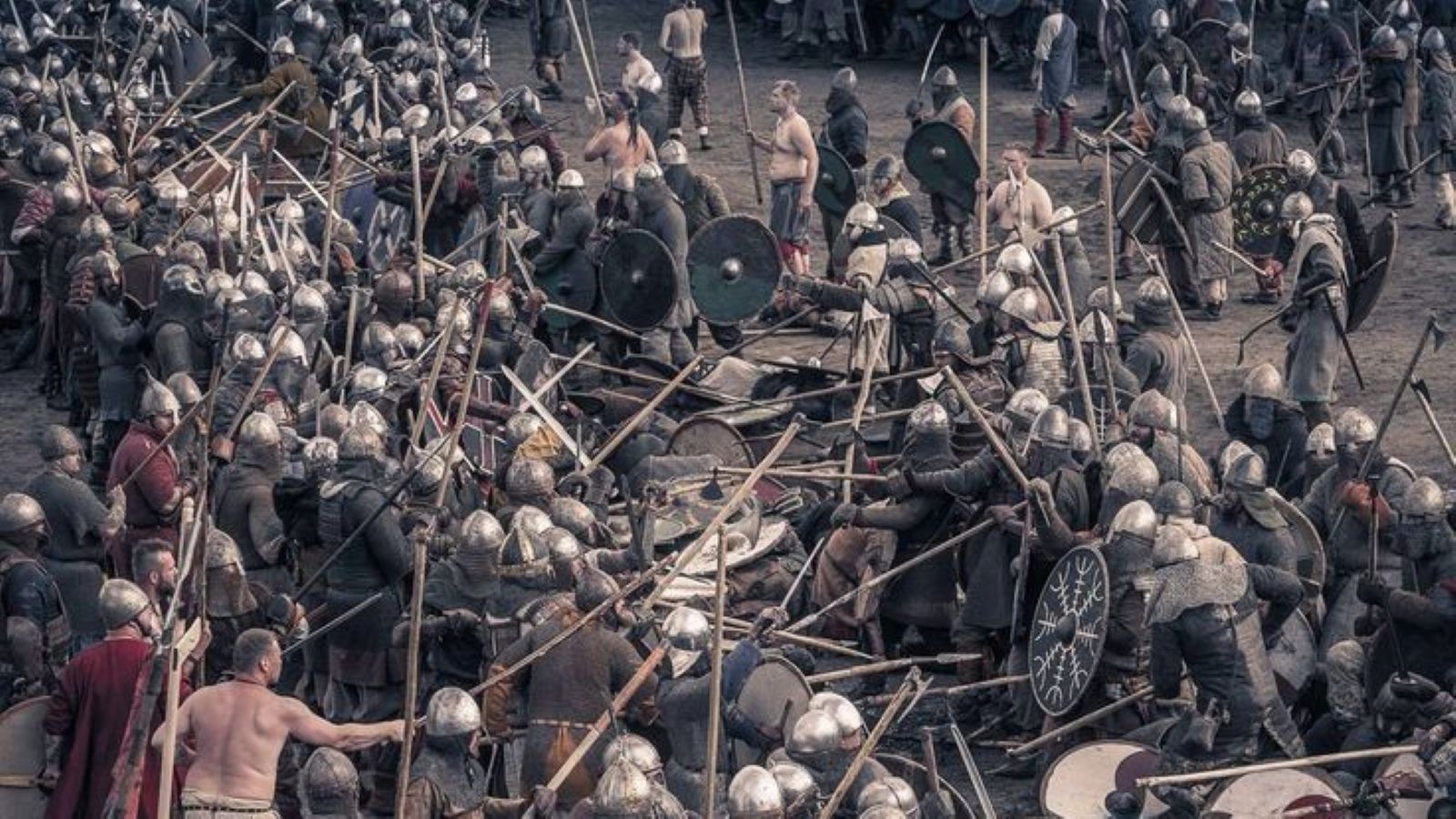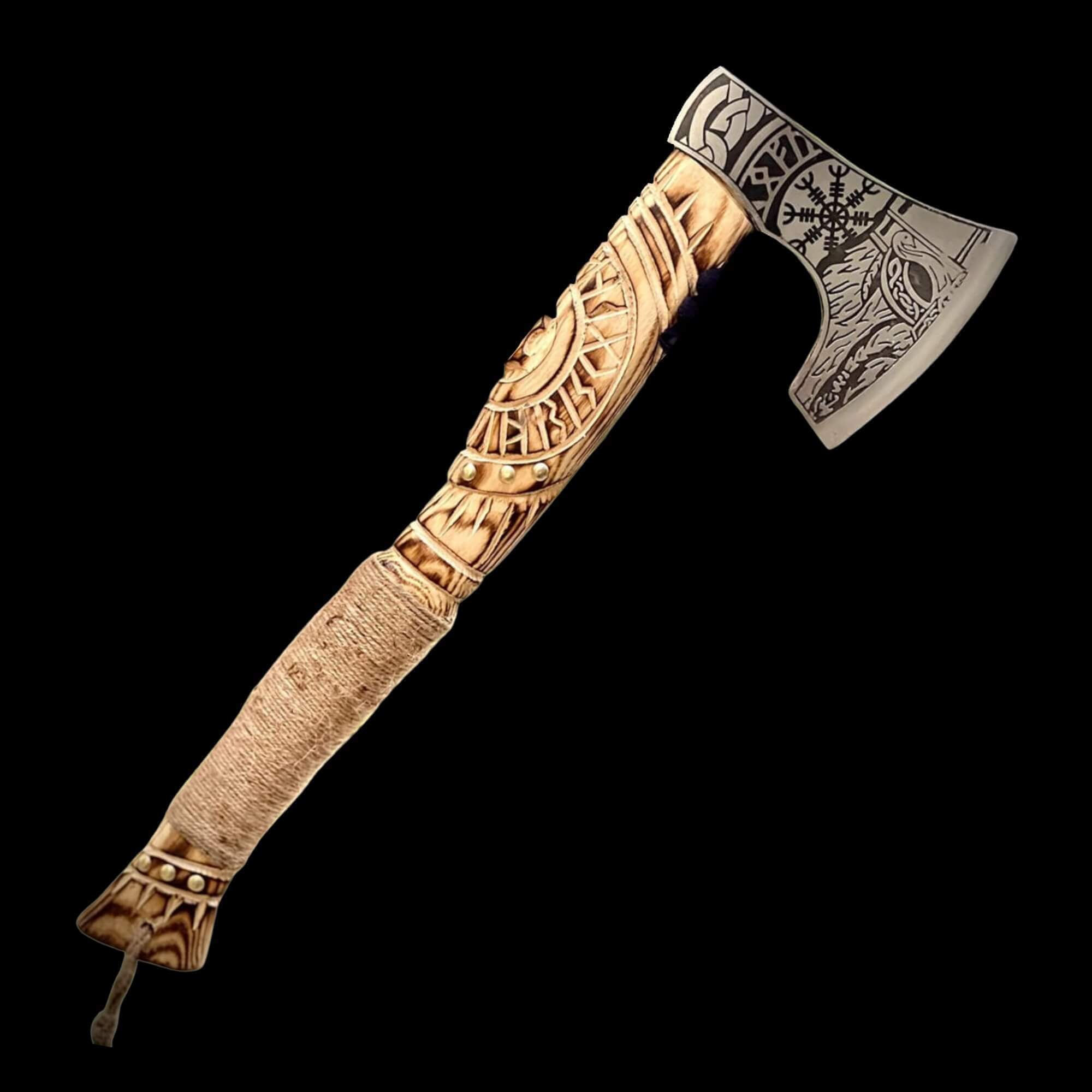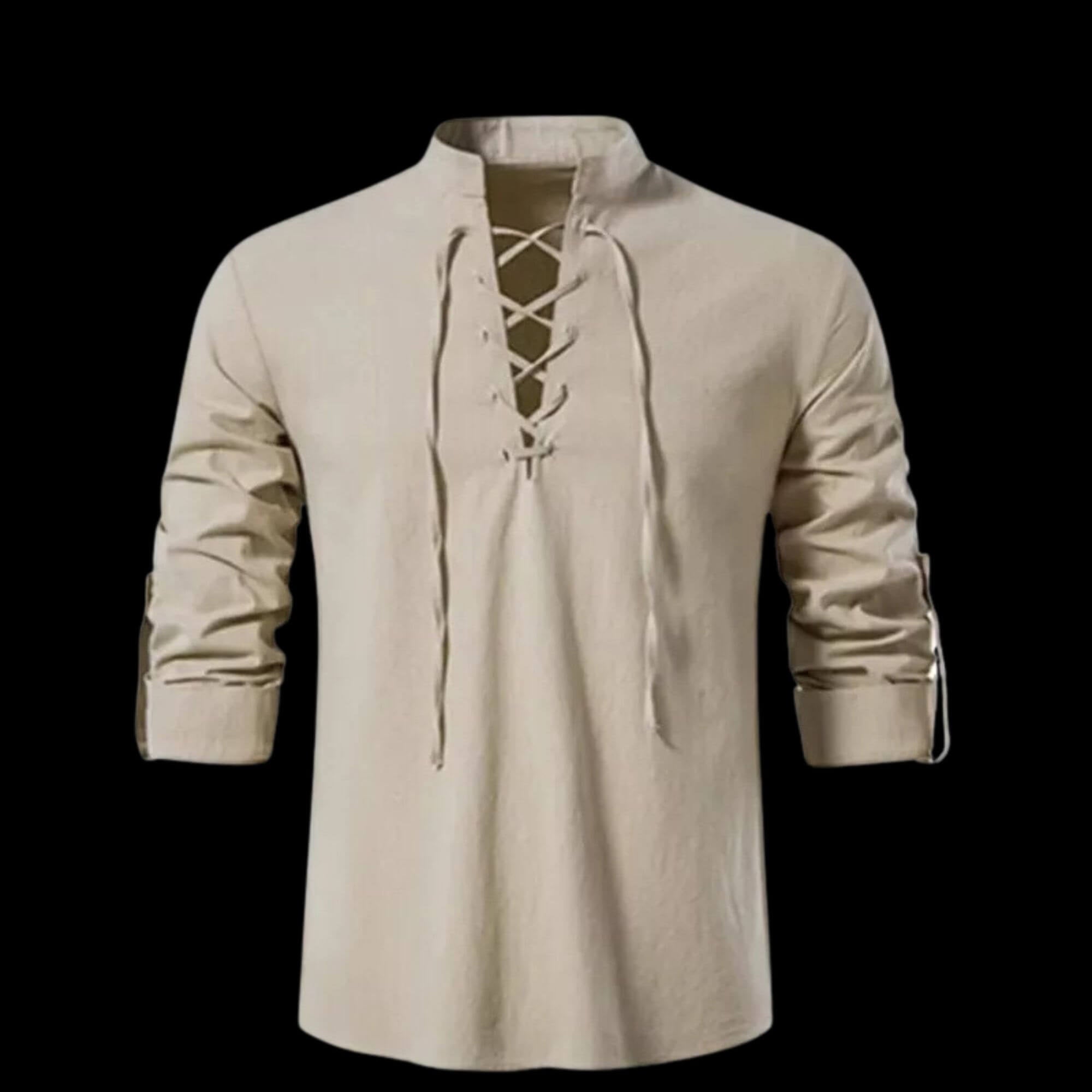
The Great Heathen Army: Vikings Unite to Conquer England
In 865 CE, England faced a threat unlike anything that had come before. The scattered raids of previous decades gave way to something far more dangerous – a massive, organized Viking force that would become known to history as the Great Heathen Army. This was no mere raiding party; it was an invasion force bent on conquest.
The Sons of Ragnar
The Great Heathen Army arose from a desire for revenge. According to Norse sagas, the catalyst was the death of the legendary Viking leader Ragnar Lothbrok, allegedly executed by King Ælla of Northumbria by being thrown into a pit of snakes. His sons – Ivar the Boneless, Halfdan Ragnarsson, and Ubbe – gathered a massive force to avenge their father's death. Whether this tale is historic truth or legendary embellishment, it marked the beginning of a new phase in Viking warfare.
Formation and Scale
The army that landed in East Anglia in 865 was unprecedented in size and organization. Contemporary chronicles describe a force that dwarfed previous Viking raids. While exact numbers remain debated by historians, estimates suggest several thousand warriors, supported by a network of ships, supplies, and camp followers. This was no longer a seasonal raiding force – it was a mobile army prepared for extended campaigns.
Strategic Innovation
The Great Heathen Army introduced revolutionary military strategies to England. Unlike previous raiders who struck and retreated, this force established winter camps, or wintersetl, allowing them to campaign year-round. They used horses captured from local populations to increase their mobility, transforming from sea-raiders into a mounted army that could strike deep inland with devastating speed.
The Campaign Begins
Their initial landing in East Anglia proved their tactical sophistication. Rather than immediately attacking, they negotiated peace and gathered horses and supplies. This strategic patience would become their hallmark. By spring 866, they were ready to launch their real objective – the conquest of Northumbria.
The Fall of York
The capture of York (Eoforwic) in 866 marked their first major victory. The timing was perfect – Northumbria was divided by civil war between two rival kings, Ælla and Osberht. The Vikings seized York during this chaos, and when the Northumbrian kings finally united to counter-attack in 867, it was too late. Both kings fell in a failed attempt to retake the city, and Northumbria's power was broken.
Conquest of Mercia and East Anglia
The army then turned south into Mercia. Their campaign demonstrated remarkable strategic flexibility. Where direct conquest proved difficult, they made strategic alliances, installed puppet kings, and used diplomacy as effectively as force. In 869, they returned to East Anglia, where King Edmund's resistance ended in his martyrdom – a death that would resonate through English religious history.
Leadership and Organization
The success of the Great Heathen Army stemmed from its exceptional leadership. Ivar the Boneless proved to be a brilliant tactician, while Halfdan showed skill in administration and consolidation. The army operated with a level of coordination that surprised and dismayed the English. They could split into smaller forces to campaign simultaneously in different regions, then reunite for major engagements.
The Challenge to Wessex
By 871, only the kingdom of Wessex remained unconquered. Here, they faced their greatest challenge in the young King Alfred. The ensuing campaigns would test both sides to their limits and ultimately shape the future of England. Alfred's resistance would earn him the epithet "the Great," but even he was forced to retreat into the marshes of Somerset before finally turning the tide.
Legacy of the Great Army
The Great Heathen Army transformed England permanently. It destroyed three of the four major Anglo-Saxon kingdoms, established the Danelaw, and introduced Scandinavian culture deep into English society. Their campaigns marked the transition from Viking raiders to settlers and rulers, establishing a Danish dynasty that would eventually rule all of England.
Archaeological Evidence
Recent archaeological discoveries have enhanced our understanding of the Great Army. The excavation of their winter camp at Torksey has revealed a massive scale of activity, with evidence of metal-working, trade, and military organization. Finds include Arabic coins, weights, and gaming pieces, painting a picture of a sophisticated military force that brought international connections to insular England.
The End of an Era
By 875, the original Great Heathen Army began to split up. Some warriors settled the conquered lands, becoming farmers and traders. Others, under new leaders, continued to campaign. The army had achieved most of its objectives – the Anglo-Saxon political structure was transformed, and Viking influence was permanently established in England.




